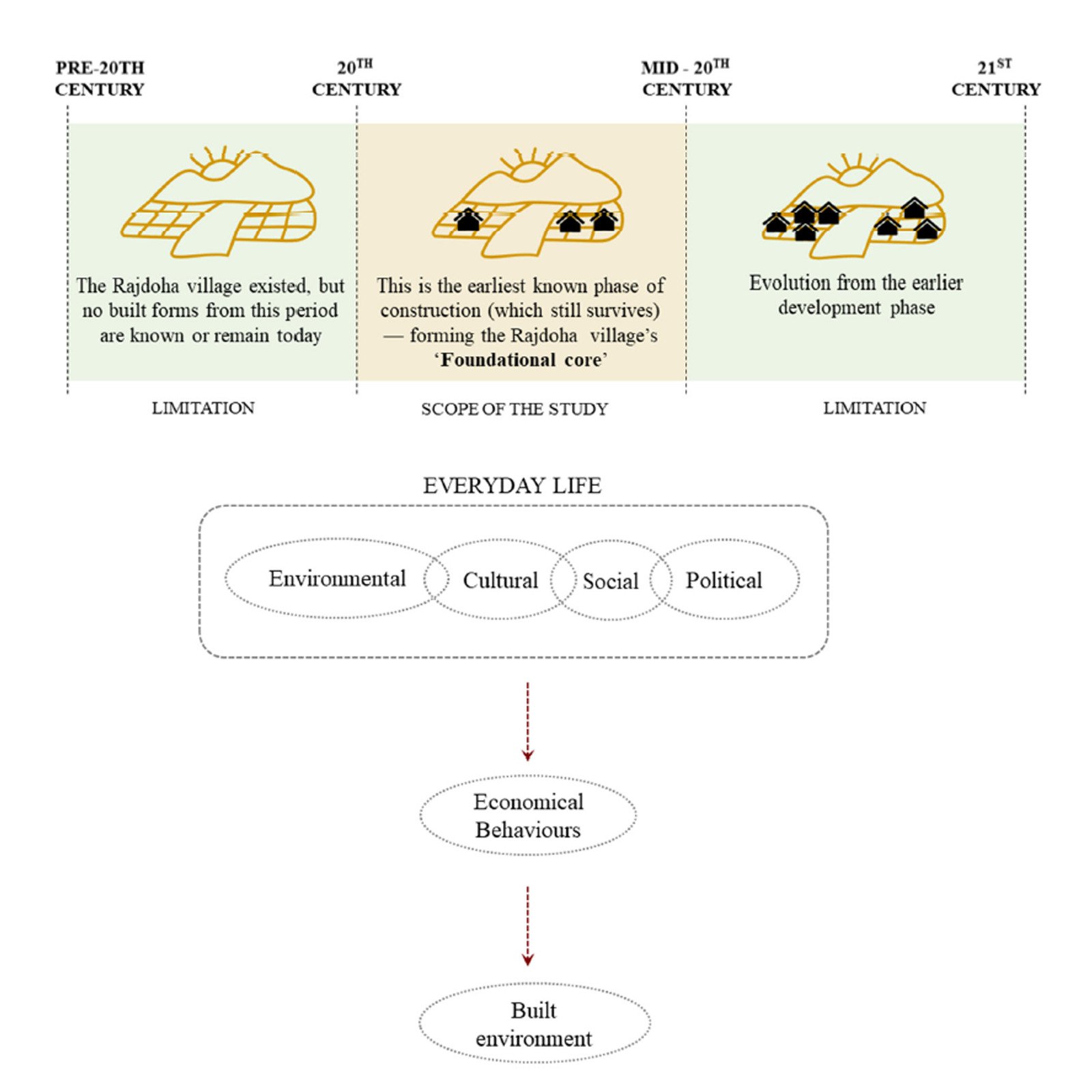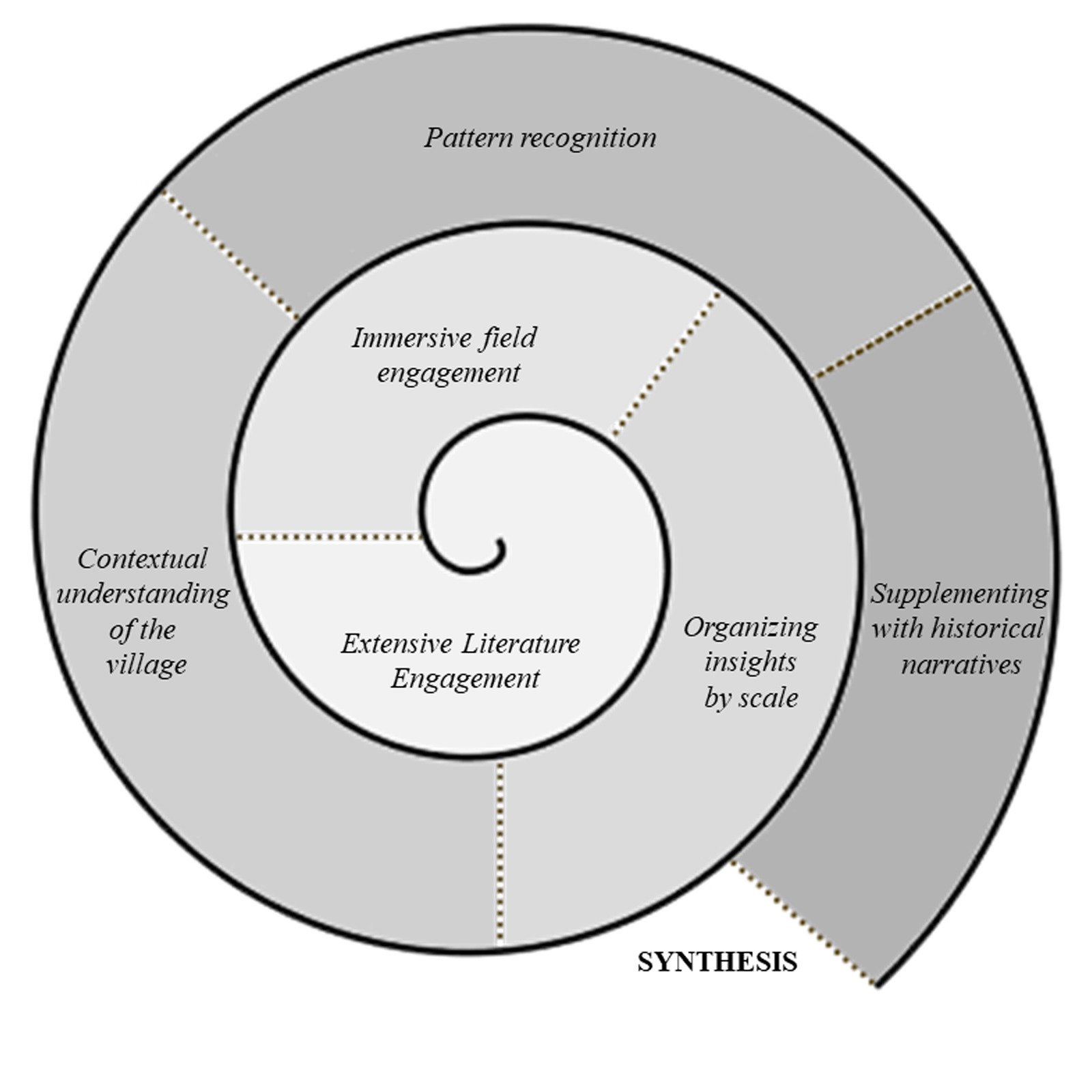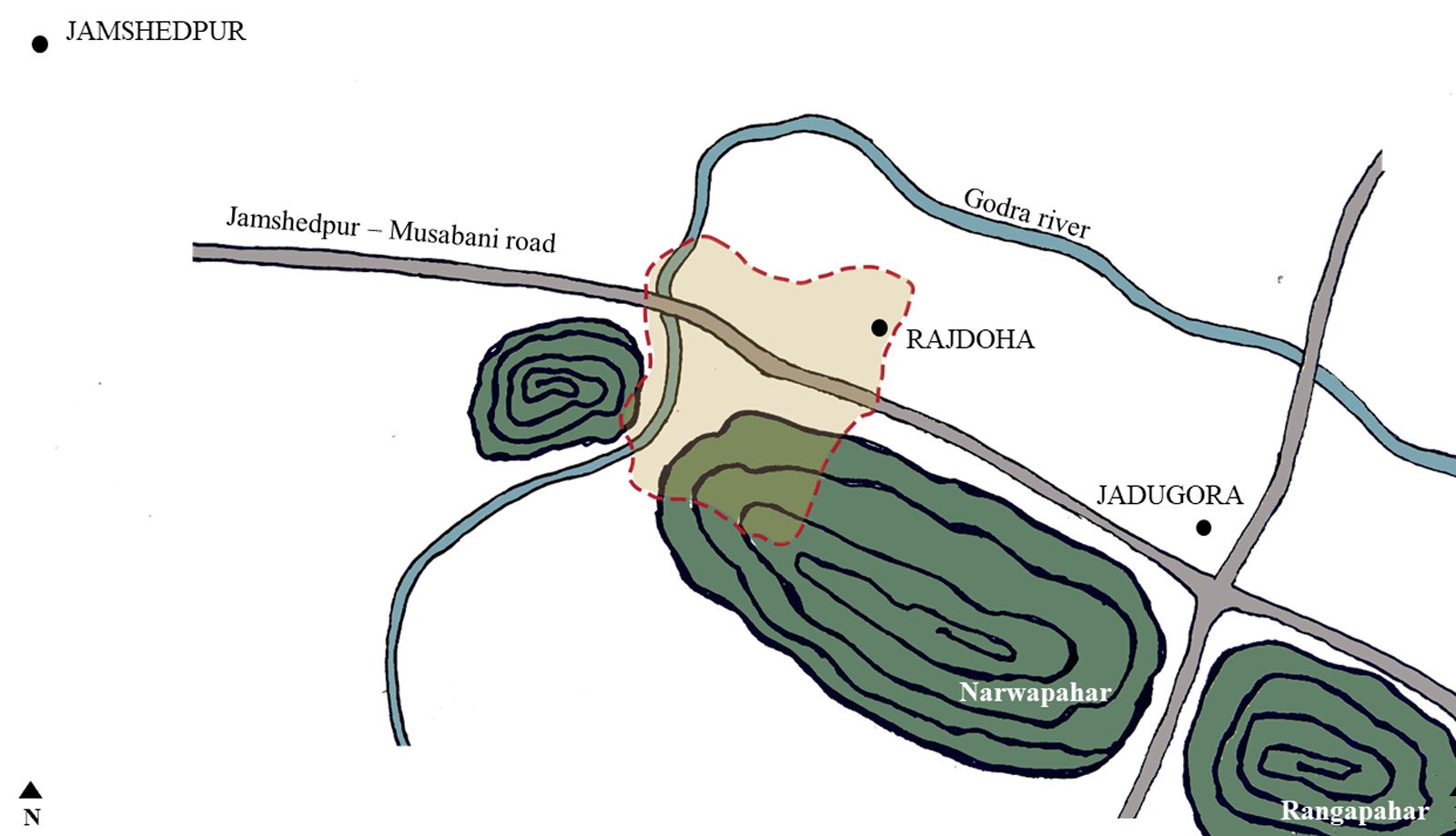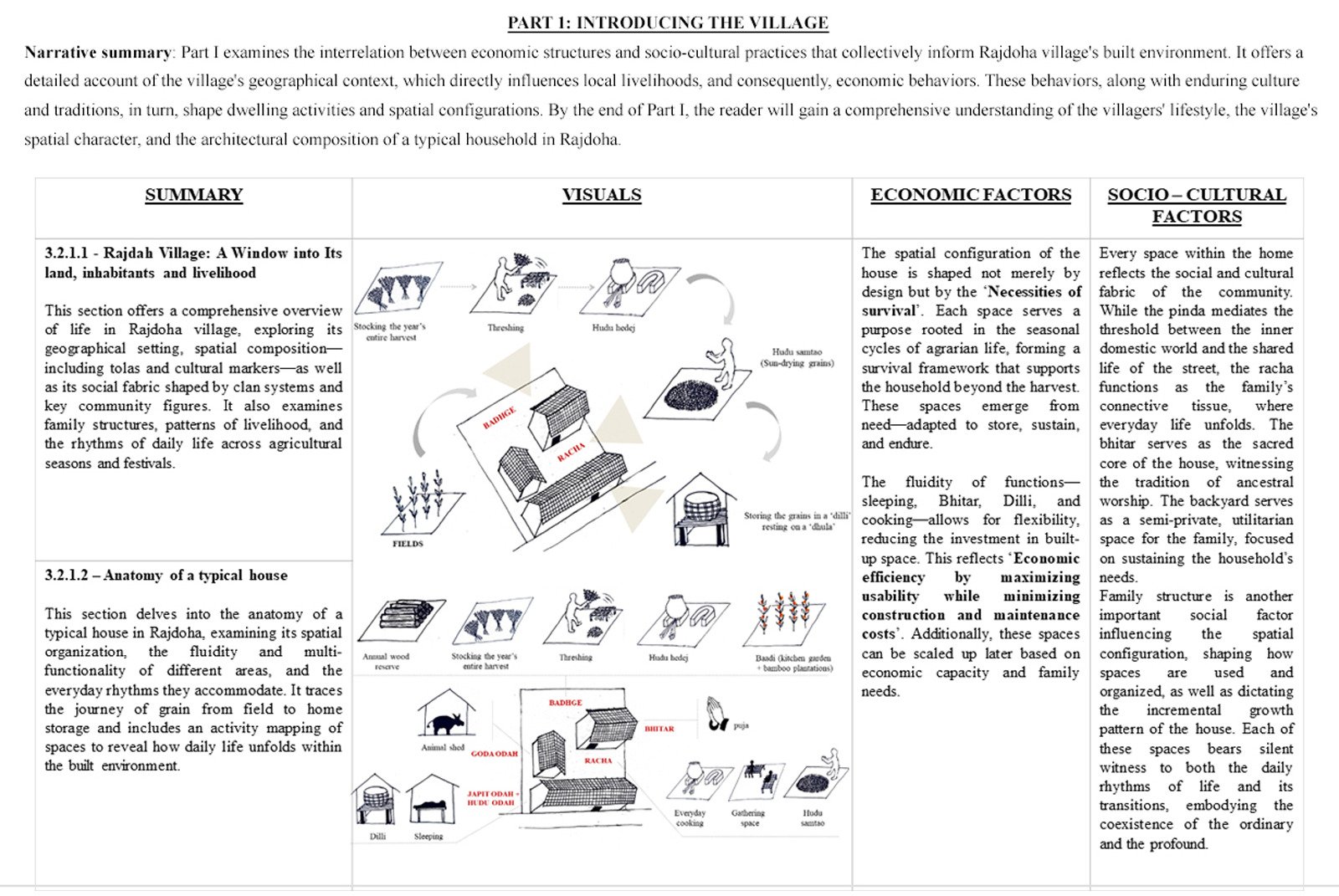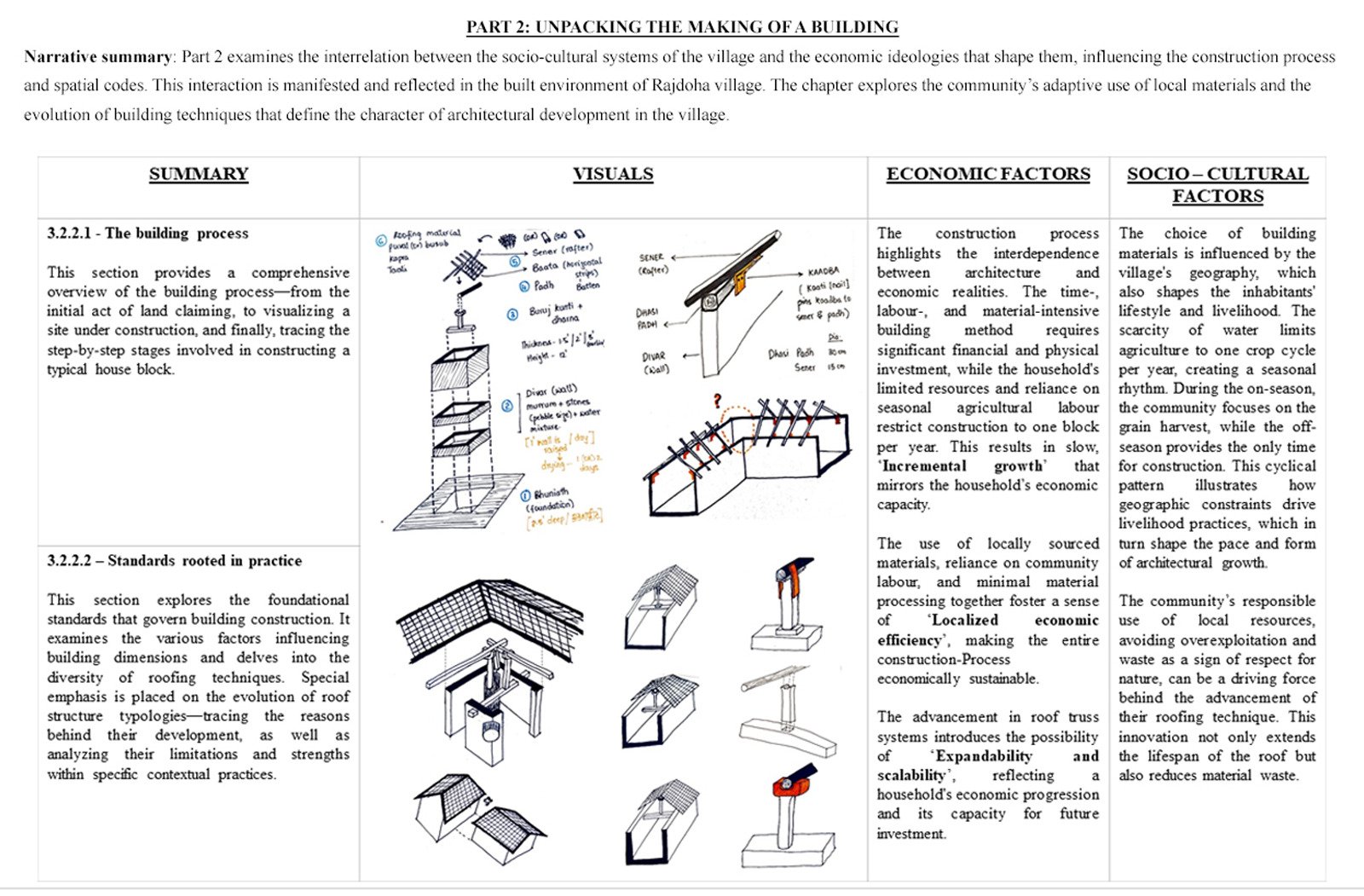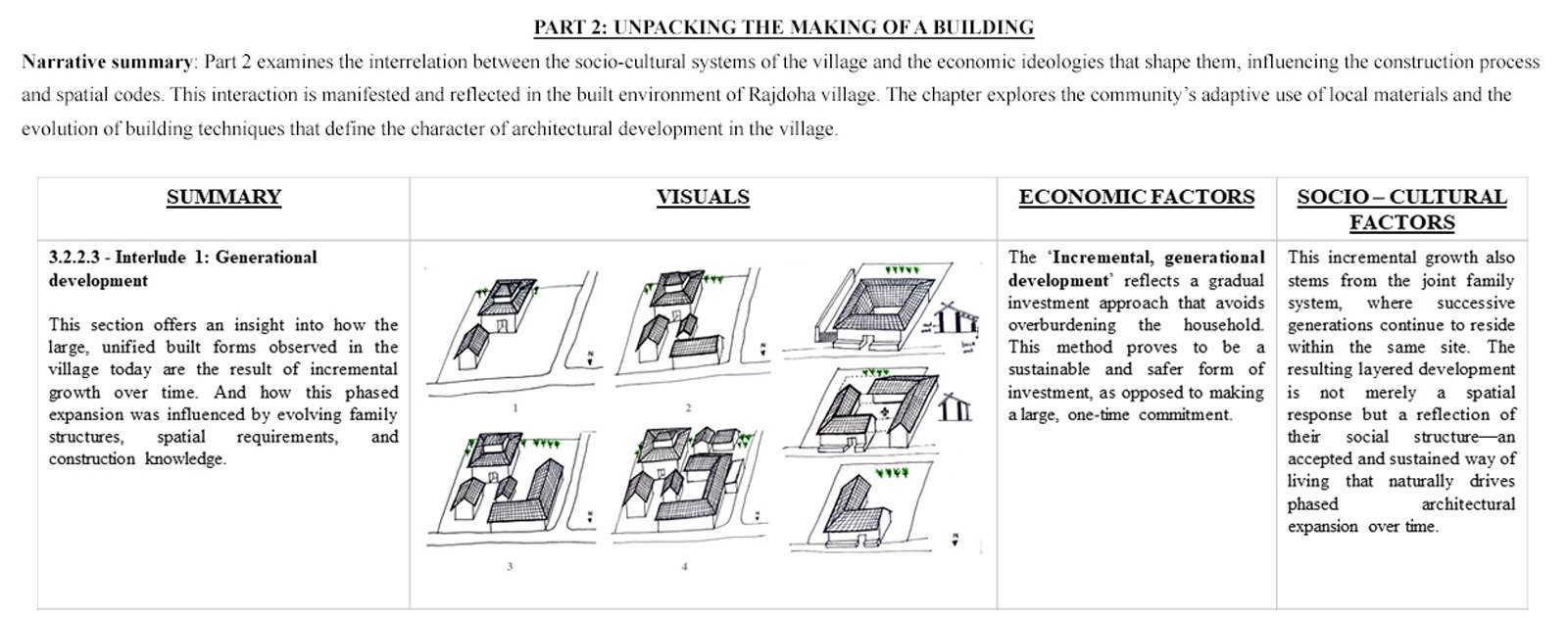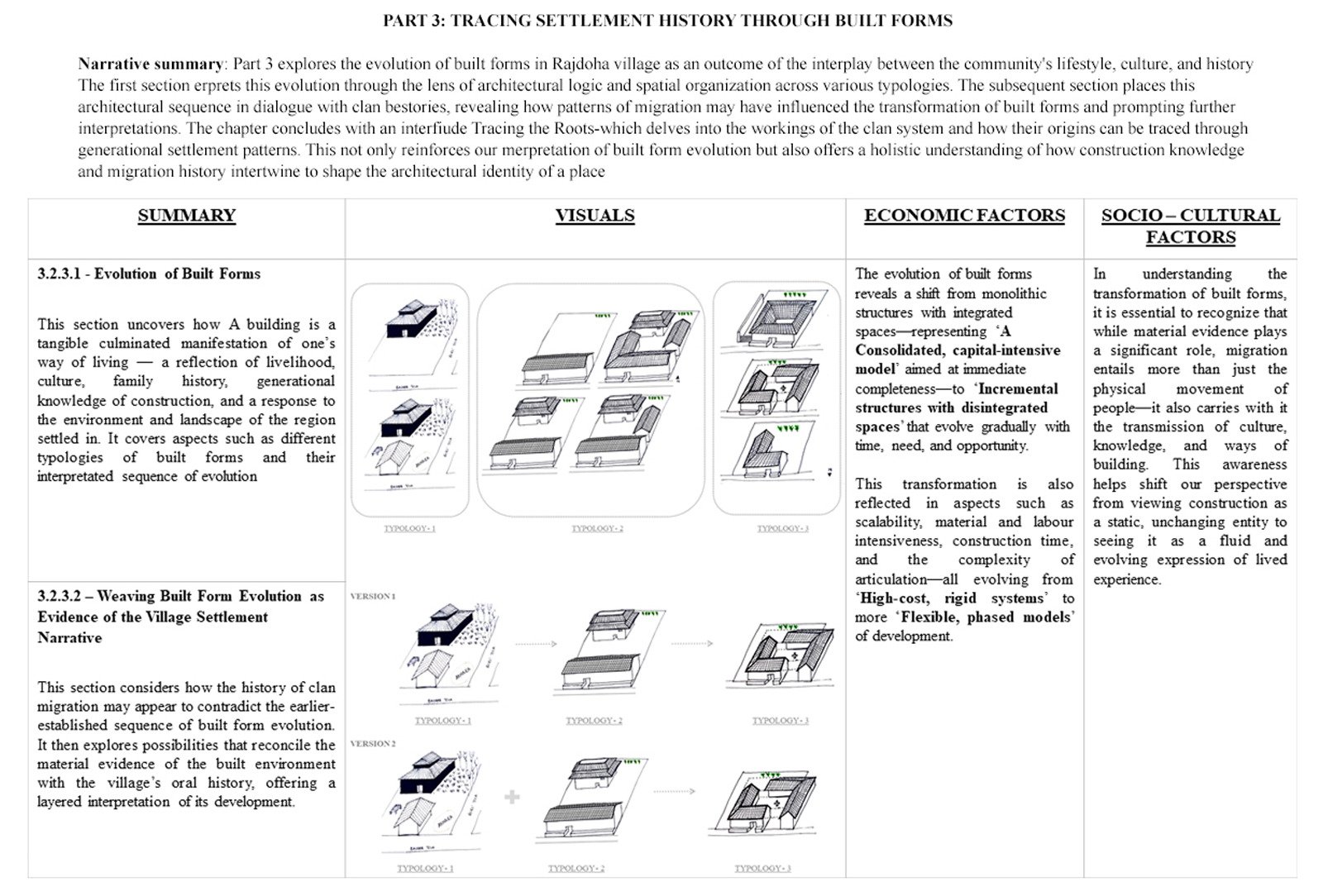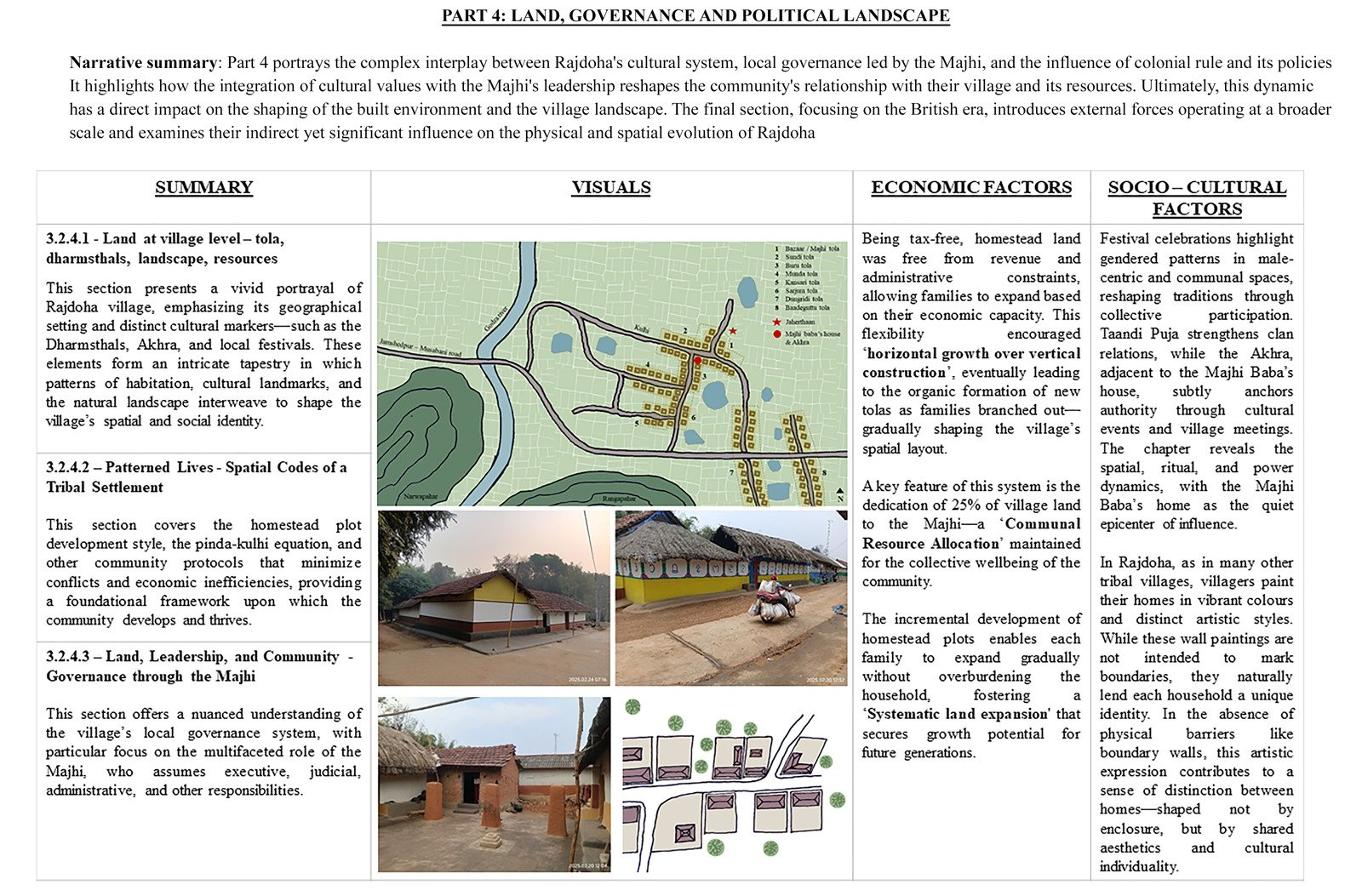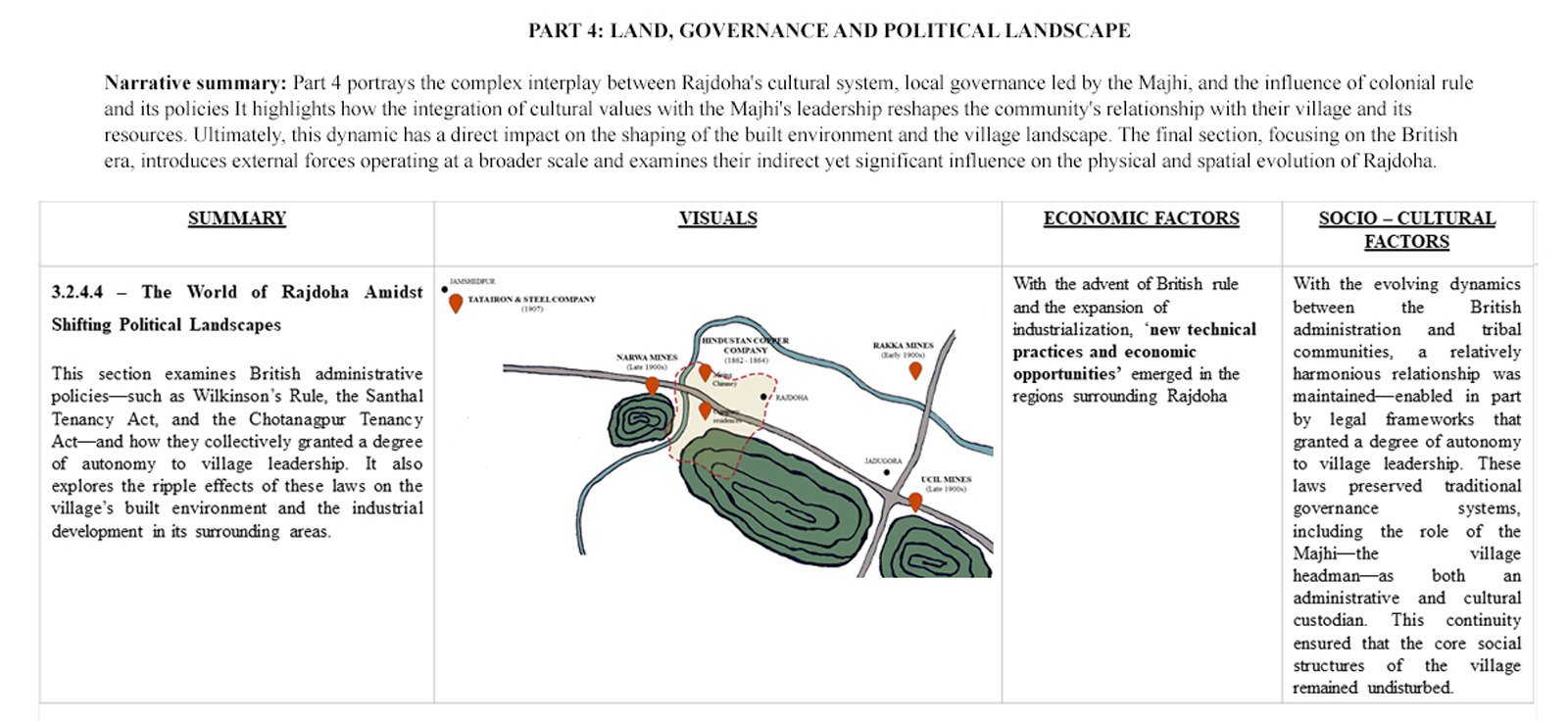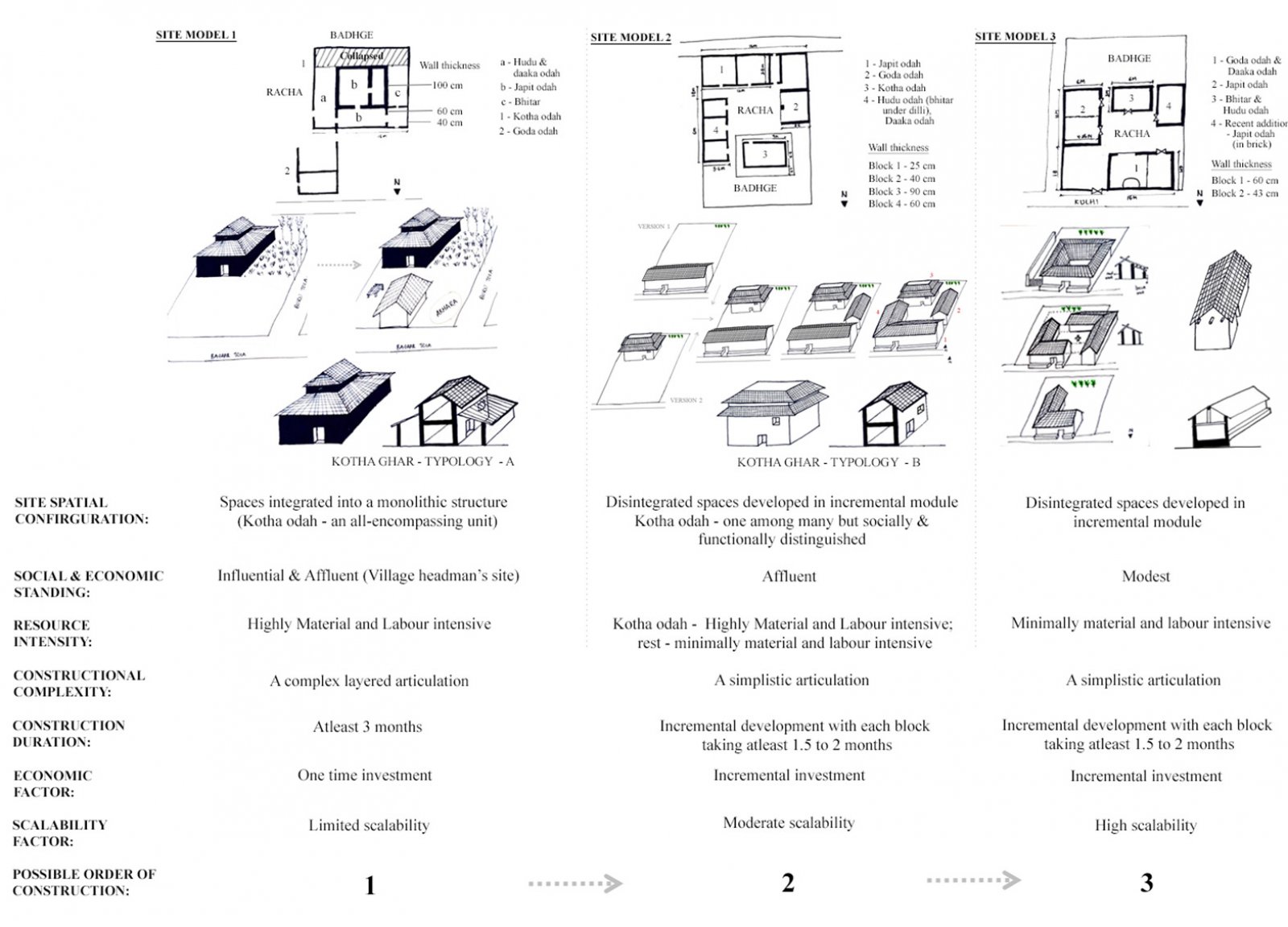Your browser is out-of-date!
For a richer surfing experience on our website, please update your browser. Update my browser now!
For a richer surfing experience on our website, please update your browser. Update my browser now!
This study examines the settlement structure of Rajdoha, a Santal village, through an economic perspective, focusing on how livelihood practices, resource management, and socio-cultural traditions shape the built environment. Drawing on fieldwork, oral histories, and material evidence, it reconstructs the foundational logic of the village’s spatial organization from the early 20th century. The research highlights how agricultural continuity, seasonal rhythms, and traditional construction methods inform spatial use. Expanding from household to settlement scale, it reveals how local knowledge systems persist and adapt over time. Rajdoha emerges as a dynamic environment shaped by economic, cultural, and environmental interconnections.
